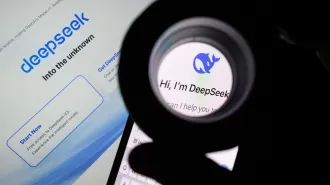Eye chip sends signals to blind rats’ brains
Retinal prostheses stimulate animals' visual cortices
- More than 2 years ago
The partial blindness that accompanies macular degeneration and other retina-damaging diseases may soon be treatable with a new prosthetic. Rats with faulty vision that received the prosthetic implants responded to light with activity in their brains’ visual cortexes, a team from Stanford and the University of Strathclyde in Scotland reports.
The results, published June 18 in Nature Communications, pave the way for people to use such chips, which are part of a bionic eye that doesn’t require surgically implanted wires, as existing retinal prosthetics do (SN: 6/16/12, p. 12).
The system involves a pair of specialized goggles outfitted with a camera on the nosepiece. The camera sends data to a pocket-sized computer, which processes the visual information and sends it to near-infrared lasers inside the goggles, facing the eyes. These lasers stimulate slender chips implanted beneath the retinas, which convert the data to an electrical signal to the brain. The brain activity that the researchers recorded establishes that the electrical signal does reach the brain’s visual center.





